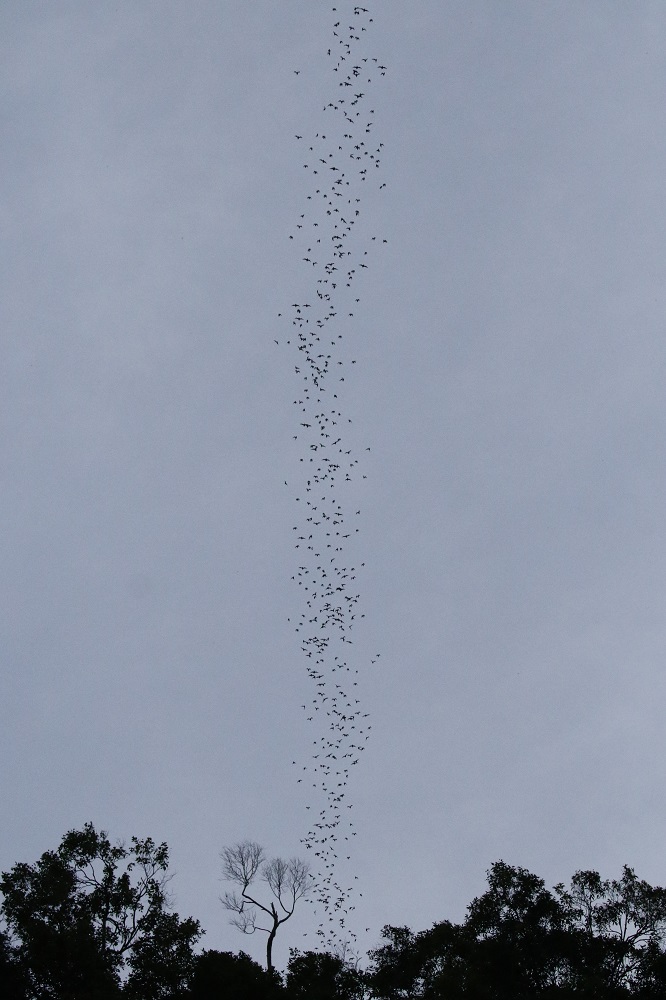February 8 - 15
16 February 2016 · Arjan Dwarshuis · 8922 × bekeken
February 8th BACK TO BEAUTIFUL BORNEO!
For the 3rd time in my life I was heading in a plane from Kuala Lumpur to Sabah, the Malaysian part of the island of Borneo. This must be one of my all-time favourite birding destinations in the world so naturally I couldn't wait to get off the plane and start birding!
The flight went smoothly and half an hour after landing we were well on our way to the Tambunan Rafflesia Centre. Jelmer Poelstra and Sander Bot - our traveling companions for the next 14 days - had arranged a rental car, which meant that we could travel with lightning speed across the island.
The surroundings of Rafflesia Centre were amazingly productive especially considering the fact that we had arrived at midday. Even after 2 previous visits I managed to connect with 2 lifers, the endemic and highly charismatic - not - Pygmy White-eye and Bornean Bulbul. In addition to these endemics we connected with 4 species of barbet - 3 of which endemics - that were all seen.
After cleaning up at the Rafflesia Centre we drove down to the D'Villa Rina Rina Lodge were we met up with Andy Boyce, a seasoned biologist doing an eight year running study on the breeding biology of Kinabalu's birds, just the guy you like meet when you're on a Biggest Year and you have just 1,5 days on the mountain :)
February 9th MAGIC MOUNTAIN
Mt. Kinabalu is famous for a lot of things, but 3 avian attractions in particular stand out from the rest, the legendary Whitehead's trio: the fluorescent green Whitehead's Broadbill, the canopy-dwelling Whitehead's Spiderhunter and the most stunning of all Asian Trogons, the Whitehead's Trogon. All 3 are rare, all 3 are beautiful and all 3 are on top of any birders wish list, but many birders go home empty-handed. We knew we had a huge task at hand, since we had just 1 full day here where people usually build in at least 4 in their itinerary; we however would hit the mountain Biggest Year-style...
We had one huge advantage, Andy had given us some locations which would significantly increase our chances at the big 3. So at first light we were on the Pandanus trail on the lookout for the incredibly elusive Everett's Thrush, but our first attempt at this zoothera proved fruitless, luckily we would have a second chance the next day.
Next we slowly walked up along the road parallel to the Silau Silau Trail and within just 10 minutes we heard the unmistakable call of a Whitehead's Broadbill, moments later we all enjoyed fantastic views at a pair of this beast of a Broadbill. 1 Down 2 to go, well actually 3, since the monotypic Fruithunter is equally cool, equally desired and equally elusive.
After the Broadbill it was slow going, but despite that we were steadily picking up the commoner targets along the lower part of the Liwagu Trail like the tiny Bornean Stubtail, the stunning Bornean Forktail, the weird White-browed Jungle-Flycatcher and the sole Asian descendant of a predominantly Australasian family, the Bornean Whistler.
Andy had told us of a flowering tree below the power station where until recently the Spiderhunter was regular. At the stakeout the colour-blind Andy asked me whether those dark blobs in the vine-tangles were indeed flowers, 'well if dried out lump of twigs is what they feed on then we are in the clear' I replied. Indeed it didn't look good, but we hadn't even finished the conversation when suddenly a Whitehead's Spiderhunter started giving its distinctive call right overhead! Jelmer was quickly on the bird, which meant that we could enjoy amazing scope-views of this stonking Spiderhunter. 2 down 2 to go...
After a quick stop at one of the only known nesting sites of Bornean Swiftlet - the Swiftlets around the powerstations are NOT Bornean-, but Glossy Swiftlets! - we decided to hit the Kiauw View trail in the afternoon, this proved a great move since we found the skulking Mountain Wren-babbler, the bizarre looking Bare-headed Laughingthrush and, best of all, a male Fruithunter that was calling high up in the canopy. 3 down 1 to go...
We still needed the Trogon, but we were quickly running out of daylight. Then Sander came up with the brilliant plan to split-up, using walky-talky's to stay in contact with each other and we had barely separated when Sander whispered through the walky-talky 'I got a pair of Whitehead's Trogon, I'm not shitting you!'. We rushed over to where he was standing and there sat the last of the Whitehead's trio, the absolutely cracking Whitehead's Trogon, male and female, having no idea how happy they just made 4 Dutch Birders :)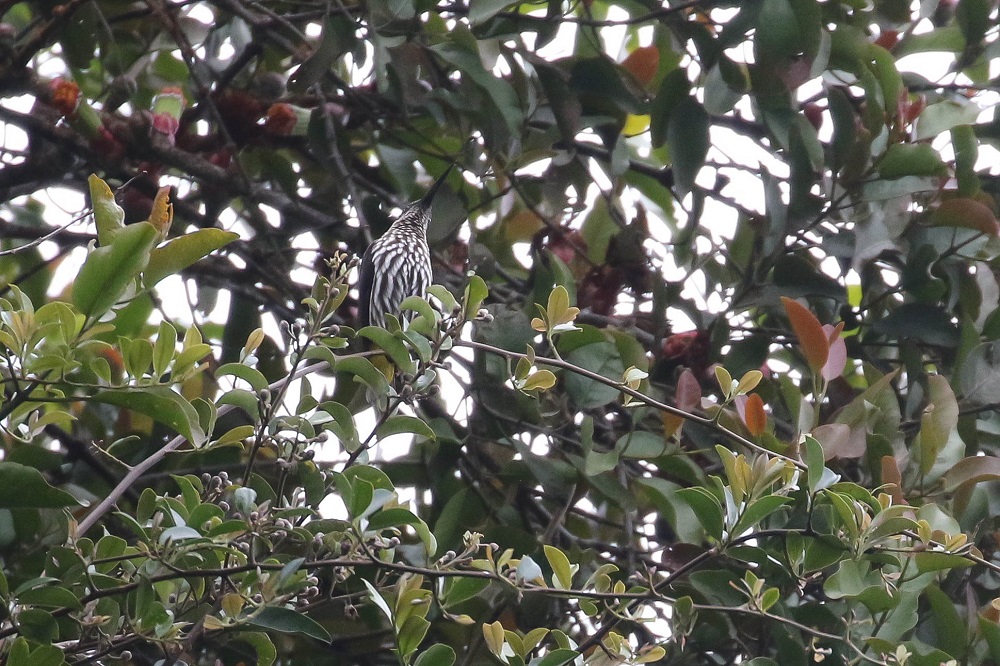
Whitehead's spiderhunter Arachnothera juliae (Max van Waasdijk)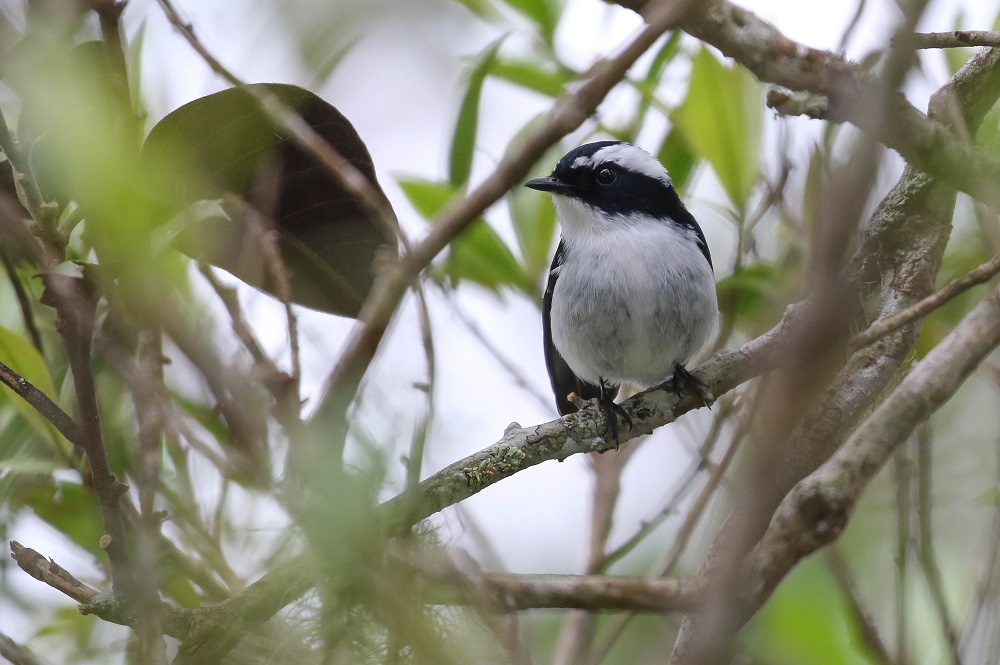
Little pied flycatcher Ficedula westermanni (Max van Waasdijk)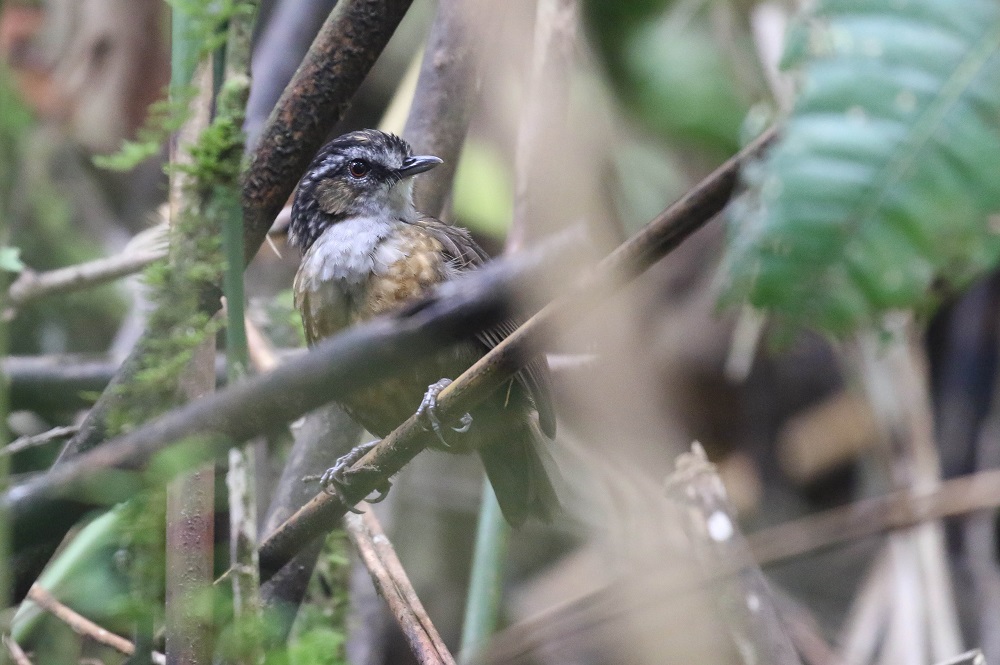
Mountain wren-babbler Napothera crassa (Max van Waasdijk)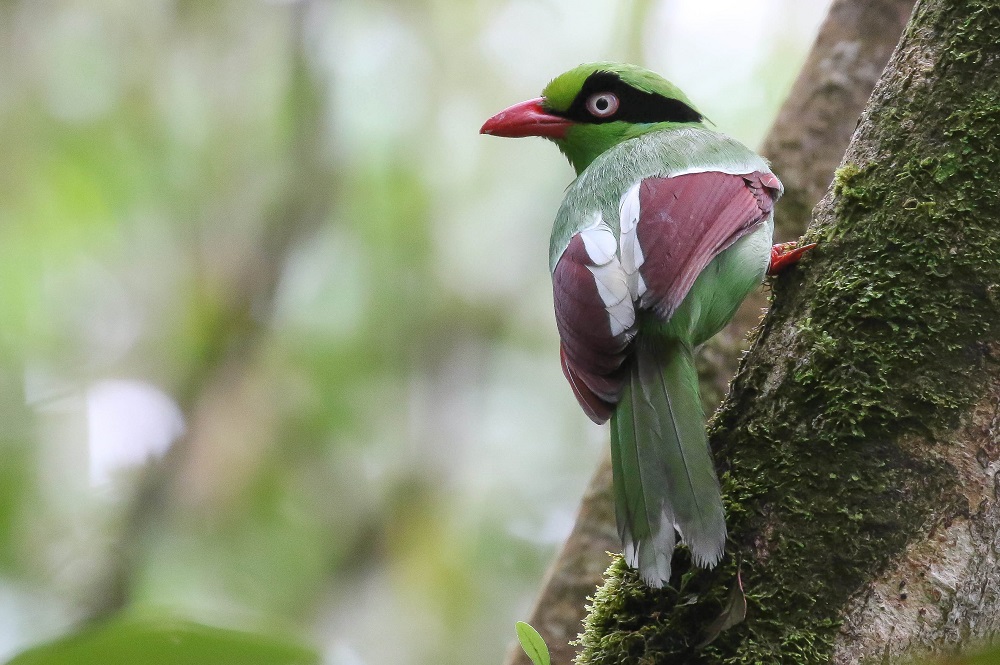
Bornean green magpie Cissa jefferyi (Max van Waasdijk)
Whitehead's broadbill Calyptomena whiteheadi (Max van Waasdijk)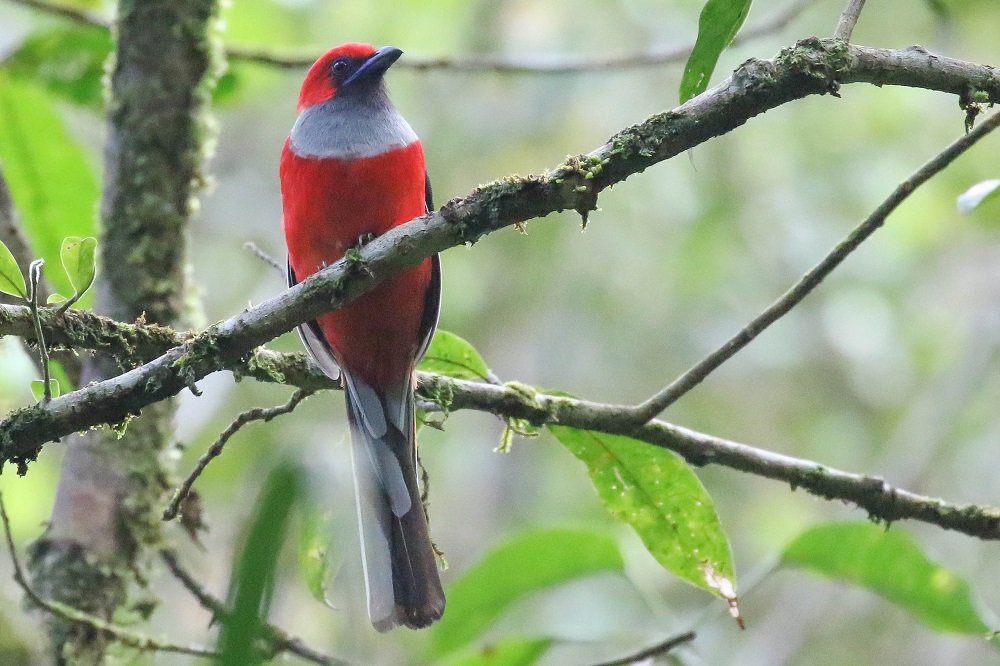
Whitehead's trogon Harpactes whiteheadi (Max van Waasdijk)
February 10th FROM THE MOUNTAINS TO THE STEAMING LOWLANDS - BORNEO BIG DAY
In the twilight we were back on the Pandanus Trail, Sander and I went up, walky-talky ready, Jelmer and Max stayed down at the usual stakeout for the Thrush. As we slowly walked up there was nothing on the trail, but as we went down I suddenly picked up a movement on the trail. Bam! Everett's Thrush, well actually a pair! There was one problem, Max and Jelmer where below and we were above the thrush and the bird was right in a bend of the trail. So I called it in and urged them to slowly walk up, but naturally they only heard the 'Thrush!' part before they began to sprint up and subsequently flushed the birds from the trail before we could warn them... As you can imagine the mood was a bit dire after that.
Next up we drove to the powerstation to intercept the endemic Mountain Backeye coming to feed on moths that are attracted to the station's surrounding lights. We quickly found this target so now we had to make a difficult choice, walk up to try for Friendy Warbler or drive down to Poring Hot Springs. Since the latter location would probably produce more species for my Biggest Year we decided to go for a morning at Poring.
It was still raining when we were on the Waterfall Trail which meant that it was quiet despite being Chinese New Year. This meant that we could connect with two quality birds: the diminutive White-fronted Falconet and a flock of the rare Waterfall Swiftlet overhead, in addition to these rarities we had a good number of commoner species so to us Poring was not that boring!
The heat of the day was used to drive all the way down to Sepilok so the last hours of daylight were spend on the fantastic canopy boardwalk of the Rainforest Discovery Centre. The birding was awesome despite the complete lack of Bristleheads. Red-throated-, Copper-throated- and Van Hasselt's Sunbird, eye-to-eye views of 7 species of Bulbul and the clownish Black-and-yellow Broadbill, two juvenile Wallace's Hawk-eagles and best of all - as dusk set in - a fantastic Banded Kingfisher perched just 3 meters from us in the canopy! And don't forget the constant Jurassic Park-like calls of Green Imperial Pigeons in the background and Giant Flying Squirrels gliding from one huge dipterocarp tree to another. With 39 new ones this was huge day!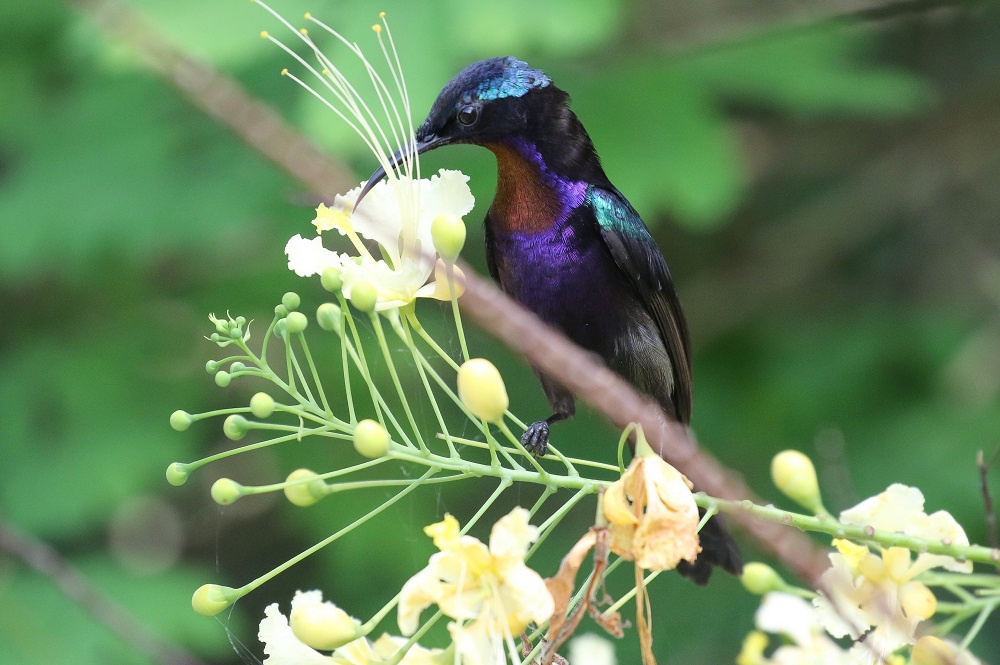
Copper-throated sunbird Leptocoma calcostetha (Max van Waasdijk)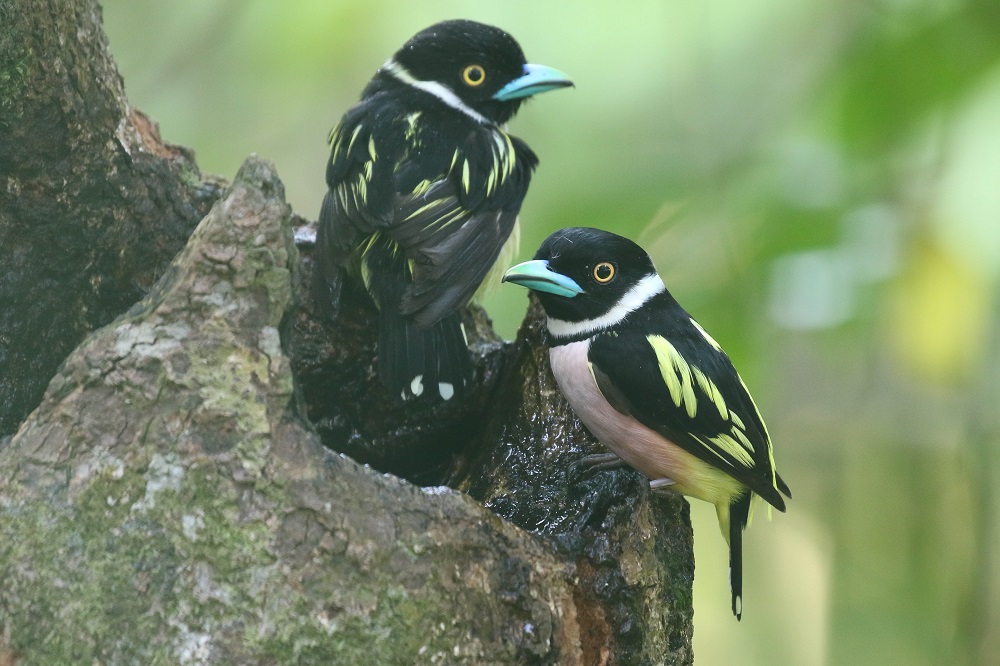
Black-and-yellow broadbill Eurylaimus ochromalus (Max van Waasdijk)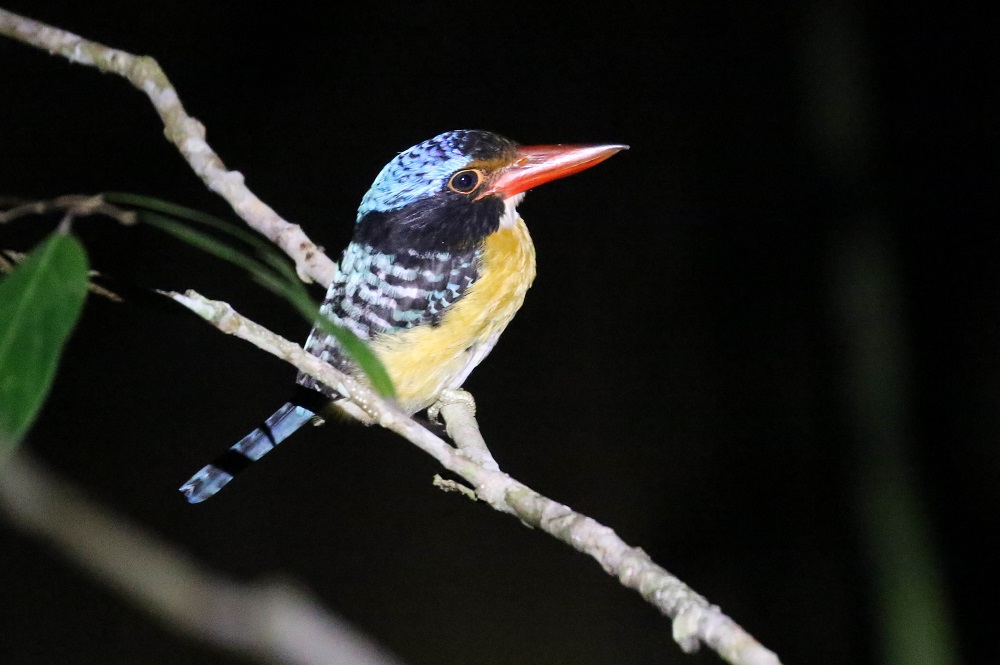
Banded kingfisher Lacedo pulchella (Max van Waasdijk)
February 11th A DAY ON THE RIVER, AND WHAT A DAY!
6 AM sharp we were at the jetty waiting for our first boat safari on the Kinabatangan River. 10 Years back I visited the fantastic Kinabatangan Jungle Camp and now - 10 years later - we were back! While waiting for the pick-up we heard a good new one for my Biggest Year list, Sunda Scops Owl calling in the distance.
After picking up the legendary Robert Chong at the Kinabatang Jungle Camp our first of 3 boat safaris began. We had barely left when we heard the oriole-like song of the now increasingly rare Straw-headed Bulbul. This stunning bulbul has been caught away in vast numbers for the illegal bird trade, an ongoing problem in Southeast Asia, especially the combination of beautiful colouration and beautiful song seems a deadly one and birds like Java Sparrow and Bali Myna have been driven to the brink of extinction.
After feasting our eyes on Bulbul we continued upriver. A group of Wrinkled Hornbills was the next highlight, but it struck me that numbers of Hornbills have dropped dramatically along the Kinabatangan since my last visit 10 years back. Hornbills are especially vulnerable since they have slow reproduction cycles and because they are highly dependent on mature dipterocarp trees for nesting, so industrial scale deforestation over the course of the last decades to make way for palm oil plantations has had a huge impact on hornbill populations. For the most majestic of all - the Helmeted Hornbill - the future looks especially grim; they are poached in vast numbers in especially Indonesia, the reason being the increasing demand for 'yellow ivory', derived from the casques of these awesome birds. I sincerely hope that governments all over the world give it their upmost to stop this ongoing tragedy, a good start would be to increase the pressure on China, the country where the majority of these endangered animals are grinded into pills or carved into statues. Robert told me that quite recently they found an emboweled Sun Bear flowing downriver, its gal-blather removed and its paws cut of...
The next highlight was another star bird of the Kinabatangan, the rare Storm's - or Sunda - Stork, two birds put on a fantastic performance as they flew right overhead. Like all other large bird species that are solely dependend on Southeast Asia's riverine and peat swamp forest they are seriously endangered, the reason? Slash-and-burn to make way for palm oil plantations. Luckily Robert was optimistic about the future of the Kinabatangan and he told us that the Malaysian government is finally putting an effort into protecting their last remaining rainforest and that currently reforestation projects are initialized all over Sabah. This is more needed than ever to counter the ongoing deforestation in neighbouring Indonesia.
Along the tributary we were lucky enough to hear one of the most difficult of all Bornean endemics in Sabah, the Bornean Ground-cuckoo, a species I was lucky enough to see at exactly the same location 10 years ago. While listening for the Ground-cuckoo we heard another mega, White-crowned Hornbill and after Robert's imitation of their call 4 birds glided overhead. Wow!
After lunch we had our next boat safari, but just before we boarded Jelmer found our first Orang-utan quietly foraging on figs high up in the canopy. I had seen them before, but for Jelmer, Sander and Max this encounter with the 'man of the forest' must have been the undoubted highlight of our trip so far.
The afternoon boat safari started slow, but a chance encounter with the very rare Bornean Pygmy Elephant - a small subspecies of Asian Elephant, sometimes treated as a valid species - was of course exhilarating!
Now we had to wait till dusk set in before we would try for one of my all-time most-wanted birds, the Large Frogmouth and surely half an hour later we were gasping at this alien-like beast of a night bird. What an incredible ending to an incredible day!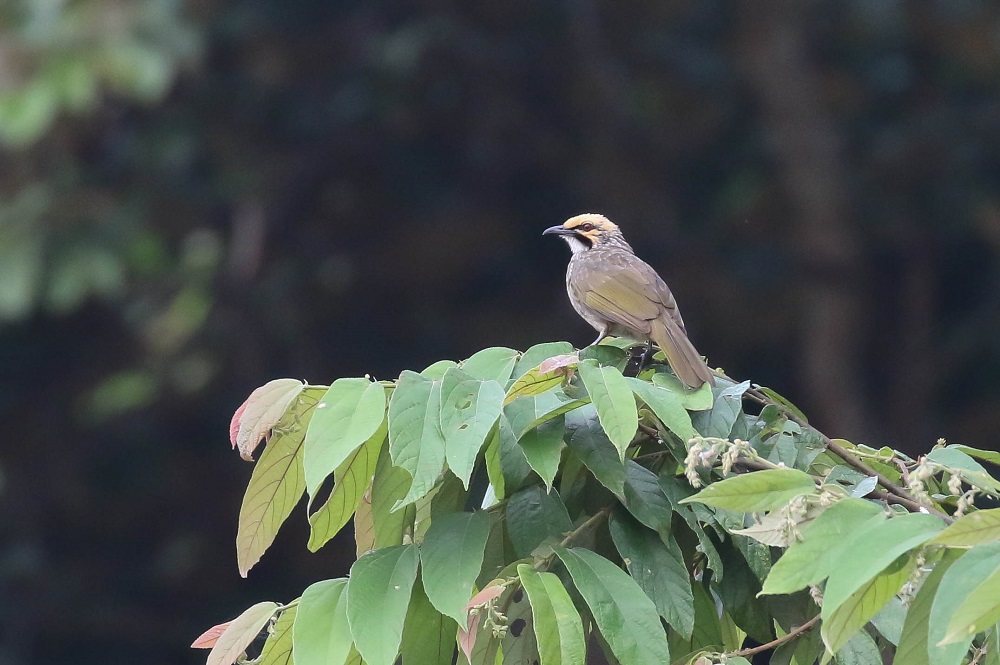
Straw-headed bulbul Pycnonotus zeylanicus (Max van Waasdijk)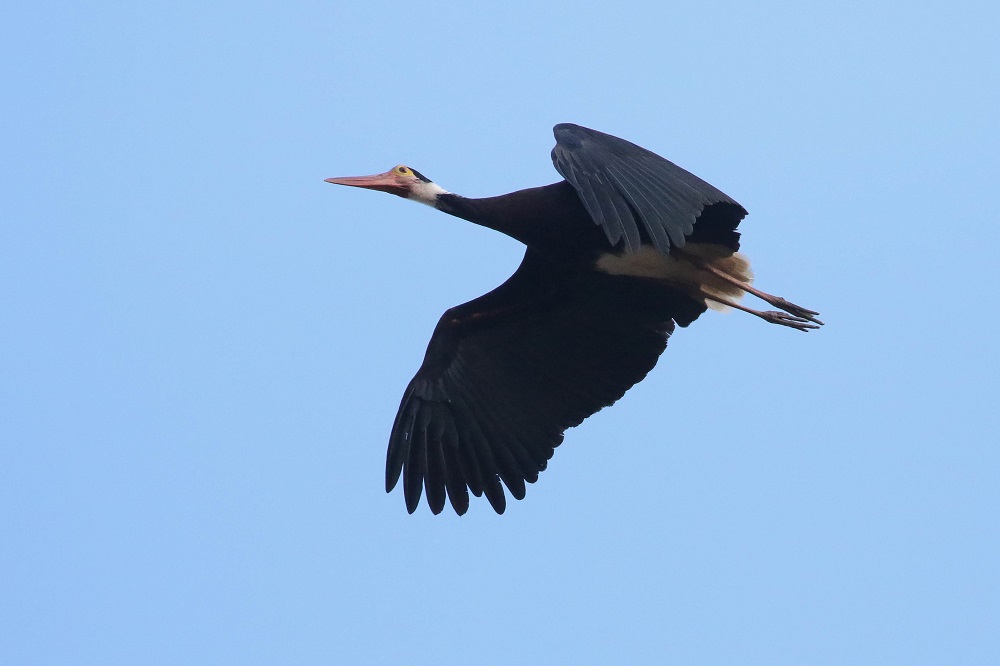
Storm's stork Ciconia stormi (Max van Waasdijk)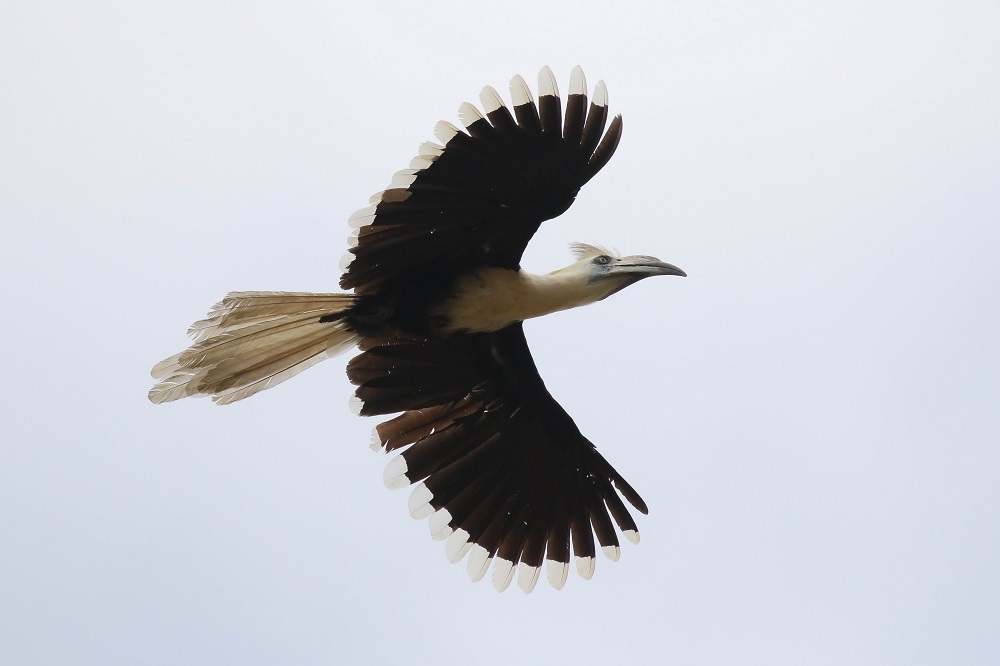
White-crowned hornbill Berenicornis comatus (Max van Waasdijk)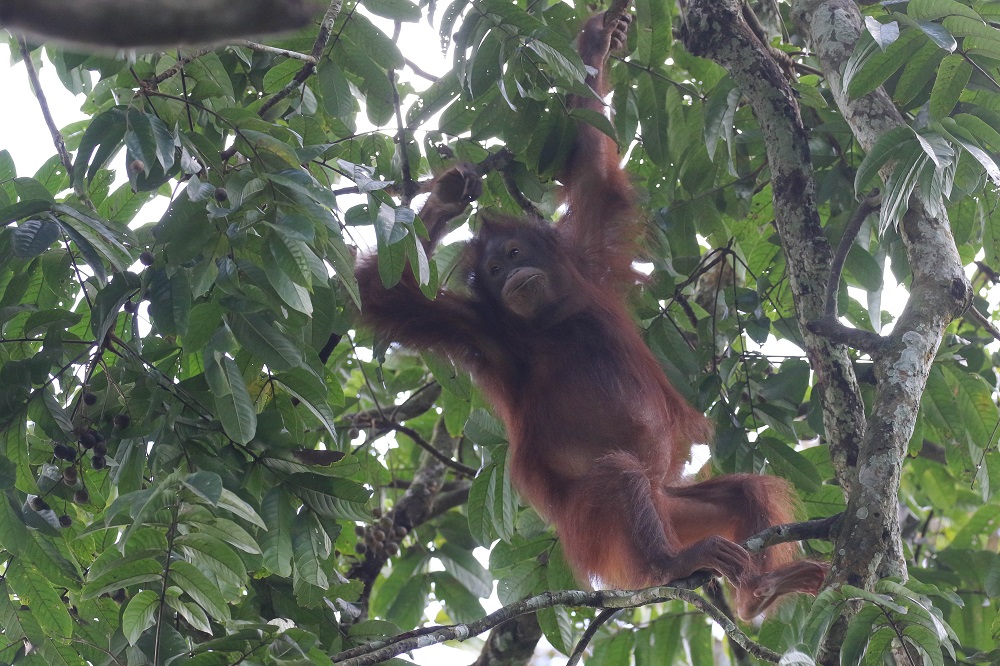
Bornean orangutan Pongo pygmaeus (Max van Waasdijk)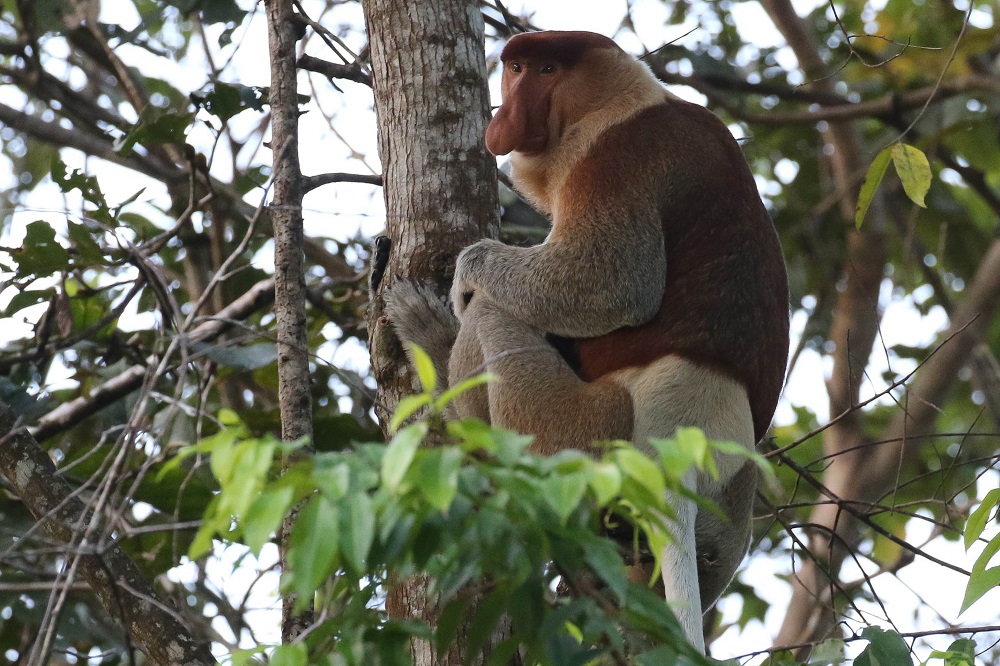
Proboscis Monkey Nasalis larvatus (Max van Waasdijk)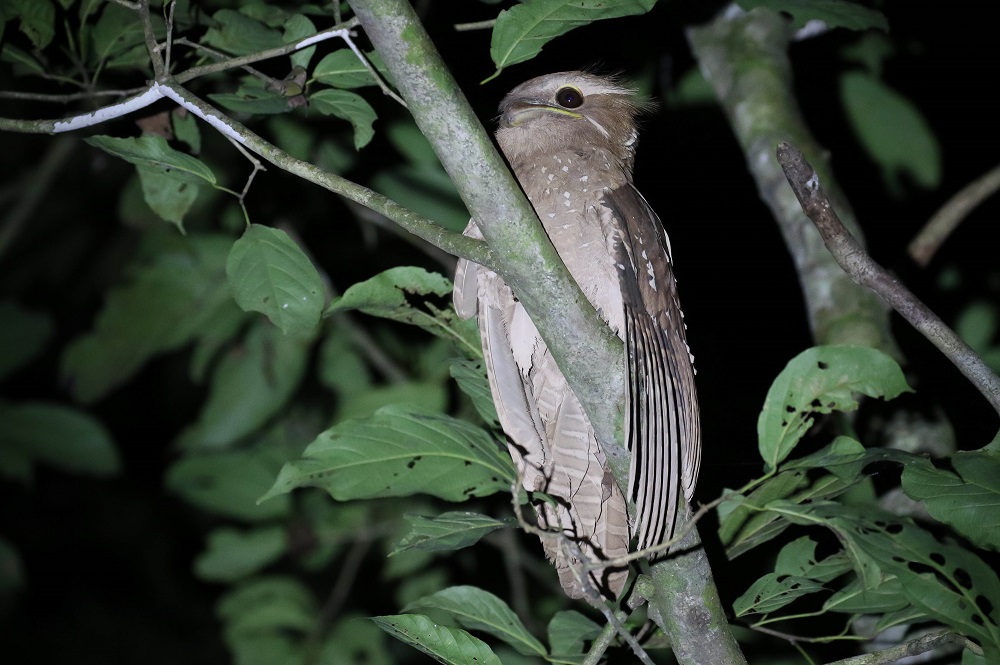
Large frogmouth Batrachostomus auritus (Max van Waasdijk)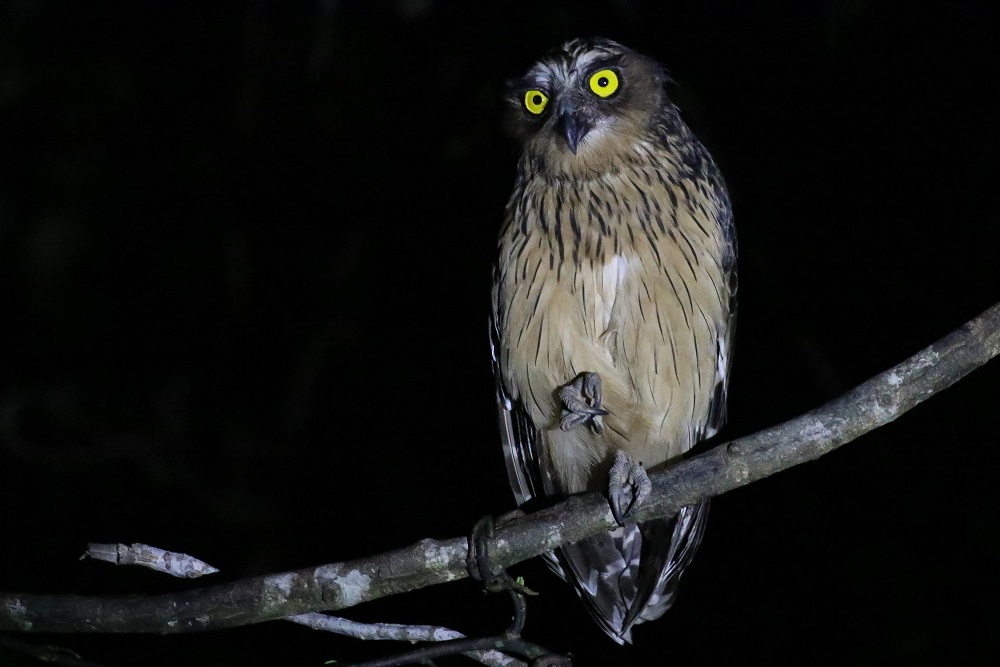
Buffy Fish-owl Bubo ketupu (Max van Waasdijk)
February 12th MY ALL-TIME MOST WANTED BIRD, FINALLY!
This morning we took a boat safari upriver to the Menanggol River, a tributary of the Kinabatang River. And what a boat ride it turned out to be! The birding started all right with targets like Long-tailed Parakeet and Blue-rumped Parrot, but things took a turn for the awesome when Jelmer suddenly started going mental while pointing at a distant tree in the distance. 'I got a %$&* Biristlehead'!!! First we thought that he had gone mad, but as we pointed our binoculars at the distant dark bird on top of the tree we could all clearly make out the bright red head. There was my all-time most wanted bird, the Bornean Bristlehead, which I'd missed twice before on previous visits to Saba. There were actually 5 birds together of which one was carrying nesting material. The Bornean Bristlehead has all the features of a top bird, it is rare, endemic, beautiful, bizarre and utterly amazing so what an enormous thrill to finally connect with this species! Until they flew off we enjoyed fantastic views of these very strange birds that are placed in their own monotypic family. Naturally we were all smiling the rest of the day, now and then mumbling 'Bristlehead'...
We said goodbye to the Kinabatangan Jungle Camp and headed for the Comantong Caves, known for its enormous colony of bats and 4 species of swiftlet that breed inside the cave-system. Besides the common Glossy Swiftlet there are plenty of Black-, Mossy- and Edible Nest-Swifts around, but you can only safely identify the latter three by their nest, this means that you actually have to see the birds sitting on the nest. We quite readily found the nests, the Edible nests - these purely white nests are built solidly from the swifts calibre and are consumed as a delicacy in, you guessed it, China - clearly stood out from the far more common Black- and Mossy nests, but unfortunately there were no birds on it, so we had to wait until nightfall to find the birds roosting on their nests. There was plenty to see in the meantime with Orang-utans and Red Leaf Monkeys hanging around in the forest surrounding the entrance of the cave and as dusk set in a real spectacle began; 100s of thousands of bats kept pouring out of the cave in a single zigzagging column while Bat Hawks, Eagles and Peregrines constantly dove down on them, an unbelievable experience.
After this spectacle we drove down to Lahad Datu where we would have our pick-up for the Danum Valley Field Centre 6 AM the next day.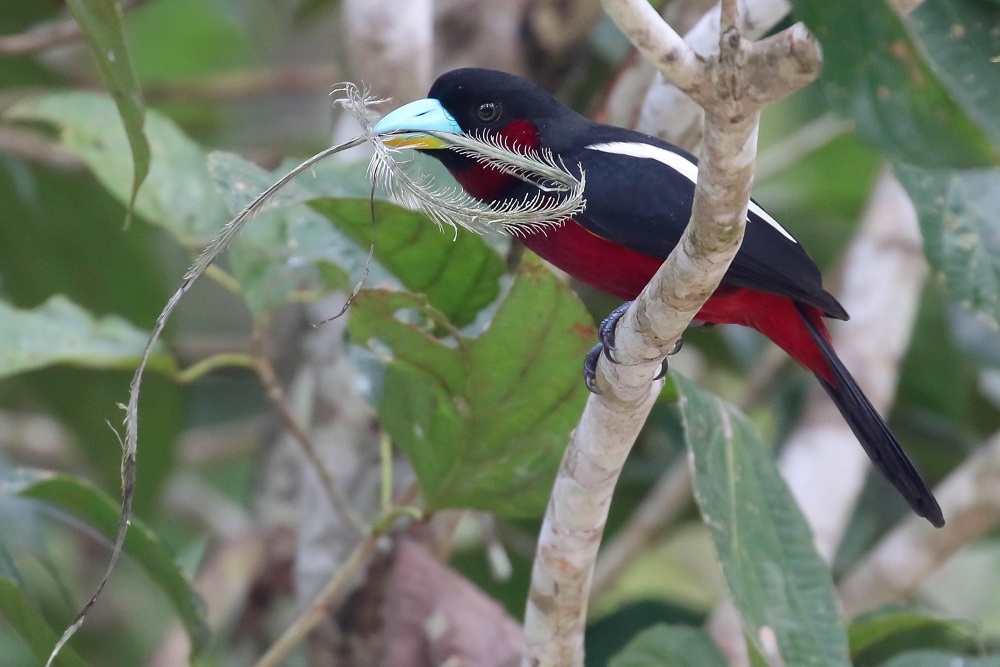
Black-and-red broadbill Cymbirhynchus macrorhynchos (Max van Waasdijk)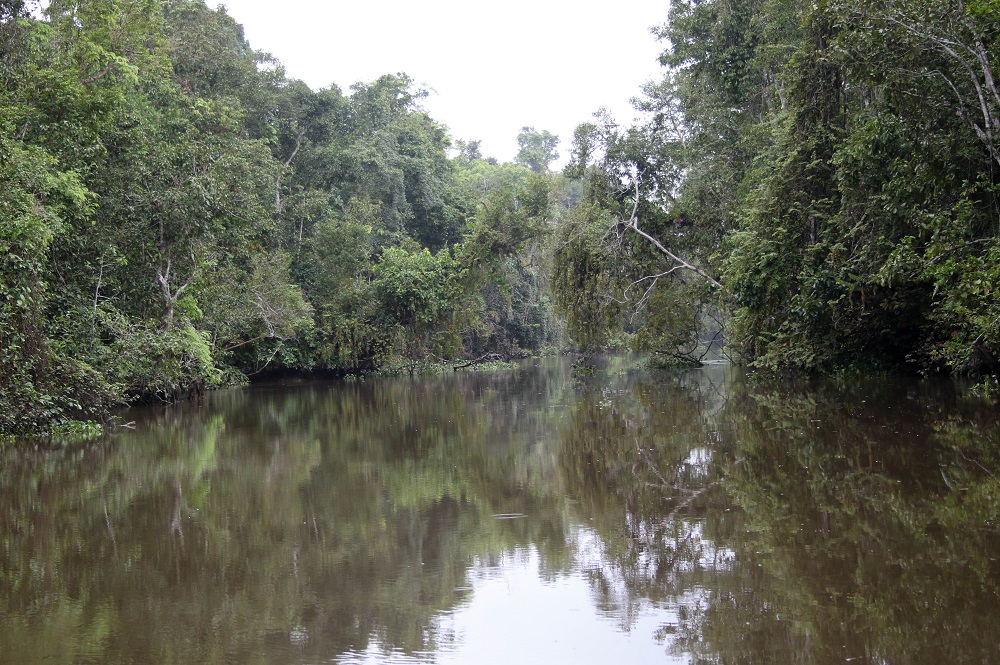
Kinabatang River (Max van Waasdijk)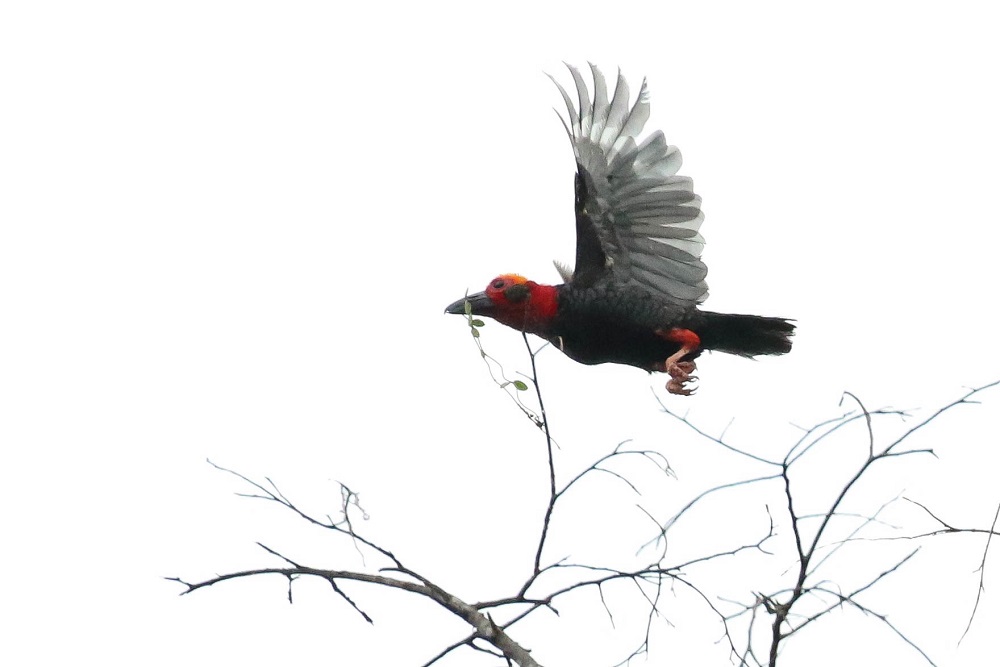
Bornean bristlehead Pityriasis gymnocephala (Max van Waasdijk)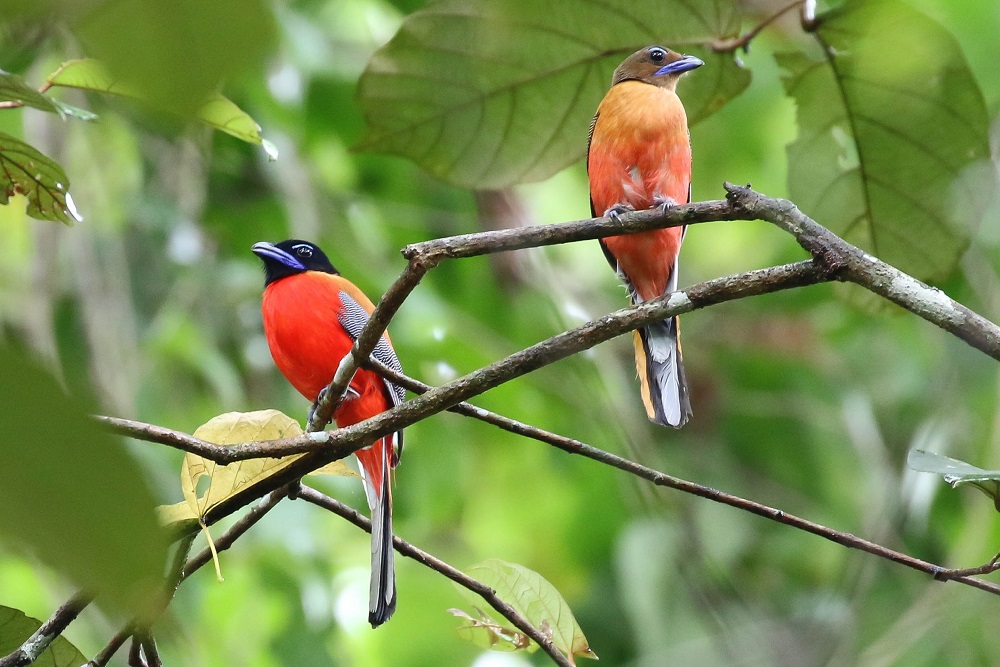
Scarlet-rumped trogon Harpactes duvaucelii (Max van Waasdijk)
February 13th TOUGH GOING IN THE VALLEY
After our transfer we arrived at the legendary Danum Valley Field Centre around 8 AM and after a quick breakfast we hit the trails. We started off with a bang with 2 male Crested (Bornean) Firebacks on the trail, but from that point on it was tough going. Very humid conditions, lots of leeches and mosquitos and slippery trails made finding incredible difficult and the only two endemics we encountered were only heard, namely Bornean Wren-babbler and Black-crowned Pitta. The highlight of the day was probably a small group of the endemic Bornean Gibbon, our 4th species of Ape this trip. Tomorrow we will have to step up our game!
February 14th STEPPING UP THE GAME!
Yesterday was a bit slow which was a clear message that we had to step up our game, so 6 AM sharp we were on the Waster fall Trail, an undulating trail through beautiful primary dipterocarp forest. In primary lowland forest all over the world an exponential curve can be drawn with just a handful of common species and a lot of rare birds. With so many species you have to make long hours on the trails to eventually see or hear most of them. We however had just 1 full day, so heavy rains would have messed up everything, luckily the weather gods were on our side.
The birding was spectacular with many of those lowland gems only or primarily found in Borneo's lowland rainforests. The first - and by far the commonest - endemic Pitta was quickly found along the trail, the Black-crowned Pitta. This bird is so red that it looks like a hot coal moving across the forest floor! Next we heard the magnificent call of a Great Argus somewhere ahead of us and as we cleared a ridge I suddenly had 2 males crossing the trail, unfortunately it all went so fast that the rest could not get on the birds. We picked up some stunning birds in quick succession like Red-bearded Bee-eater, Banded Broadbill, Red-naped Trogon and the endemic Bornean Blue Flycatcher. The definite highlight of the day came in shape of another - far less common - endemic Pitta, the almost too beautiful Blue-headed Pitta, what an absolutely smashing bird!
When we finally arrived at the waterfall we were completely soaked in sweat and covered in leeches, but the juice was definitely worth the squeeze and while we were taking a pit-stop at the waterfall the rare Blue-banded Kingfisher flew past and a Chestnut-naped Forktail showed itself incredible well.
We spend the afternoon along the entrance road birding with two young Australian birders, Brandon and Julian. The afternoon session was a lot better than yesterday on the sweaty and muddy trail and we picked up some nice Biggest Year ticks, but as we cleared a bend in the road our leisurely afternoon birding session suddenly became a very dangerous one. There, barely 20 meters away from us was a herd of 5 Bornean Pygmy Elephants on the road. I literally jumped back. The name 'Pygmy' is very misleading and from 20 meters distance they actually look huge. Elephants seem friendly, but looks can be deceiving, they can be incredibly dangerous and are known to kill people especially when they have young with them. We quickly went up a nearby watch tower to call the DVFC to pick us up with a car, but as we looked down at the elephants we suddenly noticed two girls - tourist naturally - standing 10 meters from the elephants taking photos with their phone, completely oblivious to the fact that they were in great danger. From the tower we signalled at them hoping they would leave, but stupidly blond as they were they even went closer! Finally it got dark and they turned around and when we arrived an hour later at the Field Centre and told them girls the facts they only said: 'OOOOoMG it was you guys in the tower, O my god, you guys were freaking out, the elephants were tooooootally not dangerous and we are very good with elephants'! Some people are not worth saving I guess...
February 15th ONE LAST MORNING ON THE TRAIL
We still needed two endemic Pittas to complete our set of Bornean lowland endemics, so we decided to wake early to walk up the Waterfall Trail in the dark. Our goal was to arrive with first light at the far end of the trail, the prime location for Bornean Banded- and the most difficult of them all, the Blue-banded. It turned out to be a good gamble as a Bornean Banded Pitta started calling from nearby right at the crack of dawn. The bird continuously called from very nearby, but we failed to get our bins on this jewel - luckily I'd seen it 10 year ago. 100 meters further along the trail a Blue-banded Pitta started calling. We got very close, made some amazing recordings, heard the bird breathing, but it managed to stay out of view. Pittas are the greatest price in oriental birding, but sometimes the biggest source of frustration. Luckily a Bornean Wren-babbler was a lot more cooperative and gave smashing views as it gave is mournful two-note whistle from a nearby perch.
The day before we had stumbled across a fruiting tree with a lot of fructiferous birds in it and for that reason I had carried my scope and tripod all the way up the trail - luckily Swarovski and Vogelinformatiecentrum Texel sponsored me that amazing lightweight ATX telescope and travel tripod! The fruiting tree teaming with birds - especially Bulbuls and Barbets and after some scoping we picked out two very good species, the colourful Scaly-breasted Bulbull and the yeollow-throated Finch's Bulbull. A Helmeted Hornbill gave his hysterical call in the distance, but the bird wouldn't fly into the fruiting tree...
We took a well-deserved cold shower, said goodbye to Danum - the valley had not disappointed! - and drove to Sandakan for our evening flight to mainland Malaysia. If all goes well we will be birding at Fraser's Hill tomorrow!
Happy birding!
Arjan Dwarshuis
Numerous bats overhead at Kinabatangan (Max van Waasdijk)
Discussie
Ben Wielstra
·
16 February 2016 13:17, gewijzigd 16 February 2016 13:21
Garry Bakker
·
16 February 2016 14:16
Rinse van der Vliet
·
16 February 2016 18:19
Ben Wielstra
·
16 February 2016 19:47
Wim Wiegant
·
16 February 2016 20:32, gewijzigd 16 February 2016 20:35
Rinse van der Vliet
·
16 February 2016 20:42
Jan Hein van Steenis
·
17 February 2016 09:02
Jurgen van der Meer
·
17 February 2016 11:23
Ben Wielstra
·
17 February 2016 12:50
Max Berlijn
·
21 February 2016 08:28, gewijzigd 21 February 2016 08:30
Steven Wytema
·
21 February 2016 10:30
Gebruikers van het forum gaan akkoord met de forumregels.


